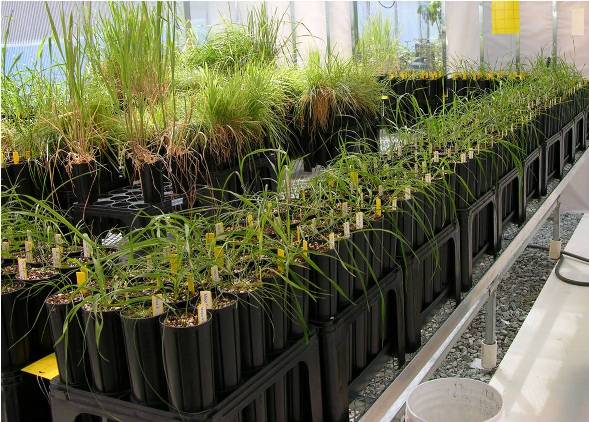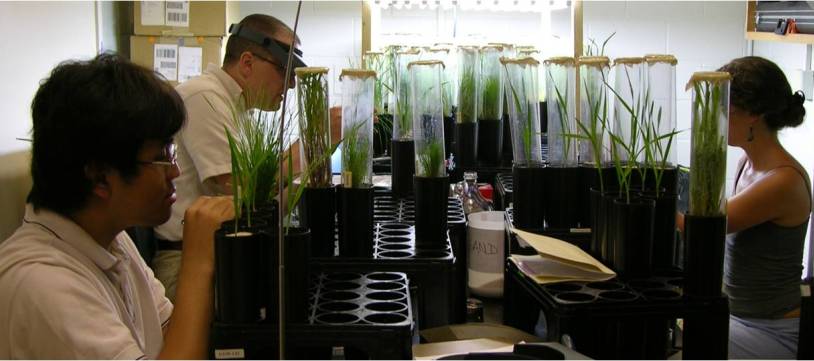Predicting disease risk from community context and host phenotype: a trait-based approach. |
|
Our objectives are to test five hypotheses:
Study Species
Project leaders
Collaborators
|
|
 |
|
This project will test whether an individual’s risk of acquiring an infectious disease (disease risk) is determined by a handful of easily measured ecological traits of the host individual (host phenotype), and of other host species that are potential sources of infection (“community context”). Experiments will be conducted using a model system for multi-host vector-borne pathogens: cereal and barley yellow dwarf viruses (BYDVs), aphid (insect) vectors that transmit them, and 20 wild grass host species. First, greenhouse experiments (conducted at the University of North Carolina, Chapel Hill) will quantify these grass species’ host phenotypes, at low and high nitrogen (nutrient) availability. Phenotypes will be quantified based on a suite of physiological traits including rate of photosynthesis, concentration of nutrients in leaves, leaf growth rate, and leaf lifespan. Hosts with high nutrient concentrations are expected to also have high metabolic rates (comprising “quick-return” or QR phenotypes) while hosts with low nutrient concentrations will have low metabolic rates (“slow-return” or SR phenotypes). Greenhouse experiments will also test whether QR phenotypes are more heavily fed upon by vectors, more susceptible to infection by feeding vectors, and better able to withstand (tolerate) the negative impacts of infection than are SR phenotypes. Field experiments will test whether QR phenotypes experience greater risk than SR phenotypes of disease transmission from other host species, and whether that risk depends on community context. The field experiments will test whether increased nutrient availability, a major result of human activities, alters disease risk. This work is based at the University of California’s Hopland Research and Extension Center. It was funded by NSF through 2013. |
 |
| (Center) Greenhouse experiment at UNC. (Bottom) Experimentally inoculating plants in the lab at UNC. | |